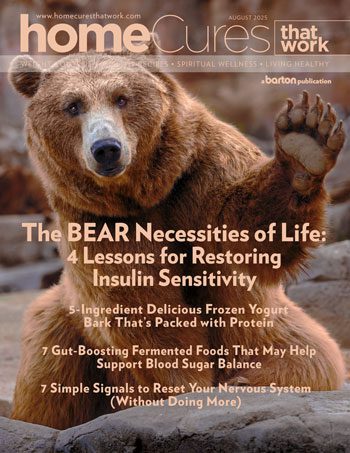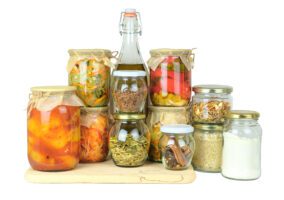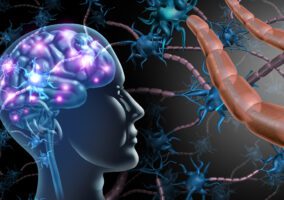Natural Treatments for Eye Problems
Pat had no health problems until she started having trouble reading at night. She went to her eye doctor who told her she had “retinopathy,” a condition associated with diabetes. Tests showed that she did indeed have diabetes type 2. She was told she needed laser surgery on her retinas, but before they could do it, they would have to remove her cataracts. She had each cataract removed separately, then the laser surgery, but her eyesight still didn’t improve.
We worked with her for many months getting her weight down, keeping her sugar under control and giving her lots of anti-oxidant foods and supplements. The only fruit she ate was berries. She had to give up all her favorite foods because she had a sweet-tooth and loved breads and cereals. She ate lots (6 cups per day) of vegetables of all colors – she said she thought she would turn into a rabbit! However, she gradually increased her vision to near-normal and was able to read again at night.It’s not uncommon for people to find the complications of diabetes before they even know they have it. This is because a person can go for many years without the typical symptoms of high blood sugar: thirsty all the time, having to urinate frequently, getting up at night several times with a full bladder and so forth. Eye problems are very common with diabetics. Since diabetes is associated with both cataracts and retinopathy, or damage to the retina of the eye, it illustrates well both prevention and natural treatment of these eye disorders.
Cataracts
When I was in medical school, we were taught to wait until something got really bad before treating it. For example, if a test was done that showed a 50% blockage of an artery in the heart, we were then to tell the patient to wait until it got to 80% and then treat it.
The same was true of cataracts in the eyes. If the clouding of the lens was minimal, we were supposed to wait until it limited their vision before we were to have the patient treated. One eye doctor I worked with told me, “The worse the cataract, the better. That way, they don’t mind the problems of the implanted lens.”
Orthodox medicine doesn’t keep up with science – it takes thirty to fifty years for medical schools to begin teaching the current knowledge so most doctors have a whole career without ever-changing their practice. For example, it took fifty years and thousands of sailors’ deaths before the British navy required lime juice on every ship to prevent scurvy.
Well, we no longer have to wait for near-blindness to have a surgery – nor do we have to live with artificial lenses. There are several studies that show a pair of amino acids can stop – and even reverse – cataracts.
Carnosine is a natural dipeptide (protein) that is found abundantly in muscles and brain. It has three effects on the eyes:
1. It is a powerful anti-oxidant, or free-radical scavenger.
2. It chelates (binds to) metals.
3. It prevents glycation, or the binding of sugar to the proteins.
This third action is especially important for those with diabetes. High levels of sugar in the body cause the formation of proteins bound to sugars that contribute to cataract formation.
For all three of these reasons, putting eye drops in the eyes with N-Acetyl-Carnosine can stop a cataract from getting worse – or even reverse it entirely. The brand of eye drops I recommend is called “CAN-C” and is available online.
For the prevention of cataracts, it is important to have a lot of water-soluble anti-oxidants in your system and to keep your blood sugar down. Your diet is essential for natural eye health. The idea is to have fewer calories with more nutrients. Keeping your sugar low requires avoiding any processed sugars and starches in your diet, such as:
- White flour
- All processed sugars
- White rice
- Pasta
- Cereal
- Corn (limited)
- Potatoes (limited)
Be careful about getting your vitamins because much of what we have been told isn’t true. For example, we are told by the juice companies that orange juice is a good source of vitamin C. But in reality, the whole fruit is much better because it also contains the bioflavonoids that work synergistically to decrease inflammation. You will always come out better by eating whole foods and avoiding those that are processed.
You may hear much in the near future about glutathione – an anti-oxidant made by your liver. It is essential for detoxification in the liver, lungs and brain. Glutathione comes from proteins – but they need to be properly digested. To increase glutathione, don’t take a supplement because they are poorly absorbed; it’s better to provide the building blocks: selenium and cysteine.
The following can be taken both to minimize your risk of getting cataracts and to assist in treating them if you have them.
- Vitamin C with bioflavonoids – 500mg per day
- N-Acetyl-Cysteine – 500mg per day
- Selenium 1mg per WEEK (take five 200mcg tablets once per week)
AMD and Diabetic Retinopathy
Age-related Macular Degeneration (AMD) is an insidious loss of vision in the most important part of the eye – the macula. The macula is responsible for reading and focusing, as well as detailed central vision. Without the macula you can see things, like in your peripheral vision, but not distinguish them well. Thus, though you can “see” light very easily, it becomes harder and harder to read, recognize faces, thread a needle and so forth.
Why?
Knowing why gives you power! If you understand the mechanism of an illness, then it allows you to prevent and treat it before it becomes a permanent problem. The area of the retina called the “macula” is extremely sensitive to energy, needing a constant supply. When energy production is limited, it sends a signal to send more blood, causing “wet” macular degeneration because of the proliferation of blood vessels. This is exactly the same as “diabetic retinopathy!”The “dry” form happens when there are too many oxygen free-radicals causing damage to the retina. Damage is done in the “wet” form because of a lack of energy, but the “dry” form the damage is done by oxidation, or inflammation caused by too much energy and not enough anti-oxidants. The “dry” form is by far the most common.
Standard treatment
Ophthalmologists treat “wet” AMD as well as “diabetic retinopathy” with a laser. Since there are a lot of blood vessels in wet AMD, they are instantly cauterized with a powerful laser. This is supposed to stop them from leaking into the retina and causing more damage. It works sometimes to stop the progress, but AMD doesn’t get better. About 70% get worse. If you think about this, it makes sense. The retina needs more energy and we are burning the blood vessels that bring more energy.
For “dry” AMD, doctors used to say there was nothing they could do. However, now many eye doctors are supplying vitamins in their offices to prevent and treat this condition.
Natural Treatment
Naturally treating both forms of AMD is essential, even if a person does laser or other treatments. A low-calorie, high-nutrient diet is the foundation, as usual. Eating all those vegetables worked for Pat, (above). Also, take the following supplements, which have been proven to stop – or even reverse – AMD and diabetic retinopathy:
- Vitamin E in the form of “mixed tocopherols” – 400 I.U. per day
- Zinc (take with copper) – 40mg
- B-complex – take 1 “B-100”
- Lutein – 20mg
- Zeaxanthin – 5mg
- Bilberry – 30mg
- Alpha Lipoic Acid – 100mg
These are now available together in many different formulations so you don’t have to get them separately. I give the quantities as a guide so you can approximate the amount you may need.
Also, I send my patients with these problems to a good acupuncturist. Acupuncture improves the circulation, bringing the needed supplies to the retina, which allows it to heal. With this combination of treatments, people get measurable results on the eye chart or with their ability to read.
The Blind Can See
Even if you are “legally blind” and are unable to read this without serious magnification, there is hope for you to recover – and reverse– at least part of your vision from cataracts or other eye problems. Even though Pat had several surgeries without improvement, she was still able to naturally recover some vision and live a normal life.
P.S. Pat no longer has diabetes, either!



























